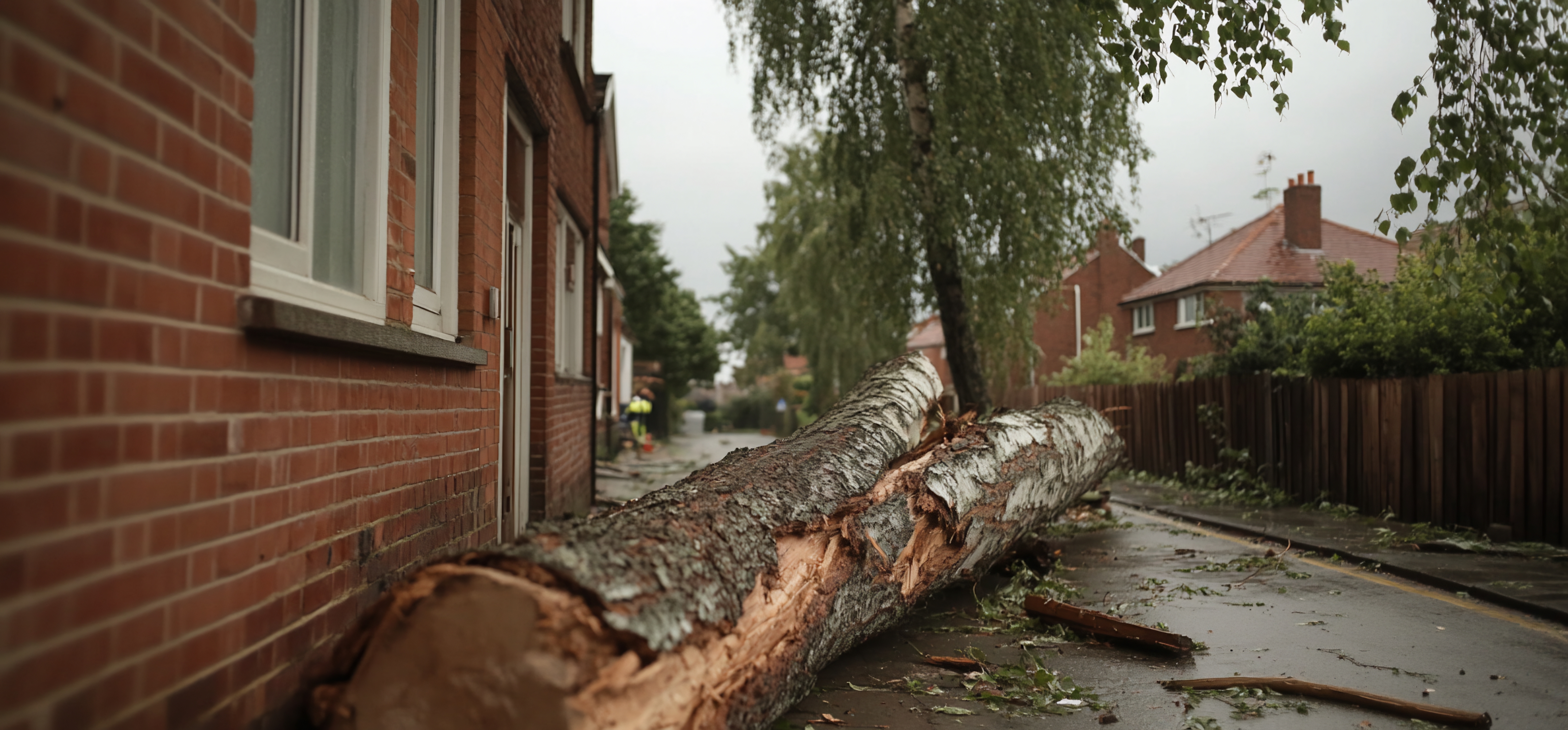How to Assess Tree Damage After a Storm
By Tree Emergency Expert
Tree Emergency Expert

Storms rack up over $15 billion in tree-related damage every year. Let that sink in. If you’re a homeowner or property manager, assessing your trees after a storm isn’t optional—it’s critical.
Storms leave chaos in their wake, and trees often take the hardest hit. One fallen tree can block your driveway, crush your roof, or knock out power lines. But here’s the kicker: the damage you don’t see is often the most dangerous. Hidden cracks, weakened roots, and splintered branches can stick around, waiting to cause trouble. Storms rack up over $15 billion in tree-related damage every year. Let that sink in. If you’re a homeowner or property manager, assessing your trees after a storm isn’t optional—it’s critical.
Here’s how to evaluate storm-damaged trees, safeguard your property, and make smart decisions. Let’s break it down.
1. Safety First—No Exceptions
Before you even get close to a damaged tree, stop. Take a step back. Fallen branches and leaning trunks are unpredictable and can be extremely dangerous.
Actionable Tip: Scan the area for immediate hazards like downed power lines, large unstable branches, or leaning trees. Keep your distance. If there’s even a hint of danger, call a professional arborist or emergency services. Safety isn’t negotiable.
2. Spot the Obvious (and Not-So-Obvious) Damage
Some storm damage is easy to see—snapped limbs, uprooted trees, broken trunks. But other signs are more subtle and just as concerning.
Actionable Tip: Look closely for cracks in the trunk, split branches, or large wounds. These might not jump out at you, but they can compromise the tree’s stability. Address these issues sooner rather than later.
3. Size Up the Tree’s Health
Not every damaged tree is doomed. A strong, healthy tree with a few broken branches can often recover. But if the tree was already in rough shape, a storm might be the final straw.
Actionable Tip: Think back to the tree’s condition before the storm. Did it look healthy, or were there signs of decay, disease, or structural problems? Trees with less than 50% canopy loss usually bounce back, but those with extensive damage might not make it.
4. Don’t Ignore the Roots
A tree’s roots are its anchor. Storms can shift or partially uproot trees, even if it’s not immediately obvious.
Actionable Tip: Check for exposed roots, cracked soil, or a leaning trunk. If the root system is compromised, the tree is unlikely to recover and should be removed. It’s tough, but necessary.
5. Deal with Hanging Branches ASAP
Hanging or broken branches, often called “widowmakers,” are no joke. They can fall without warning, causing serious injury or damage.
Actionable Tip: Identify and remove these branches immediately. If they’re large or high up, don’t risk it—call in a professional. This isn’t a job for your ladder and a handsaw.
6. Factor in Location
Where the tree stands matters as much as its condition. A damaged tree near your house, driveway, or power lines is a bigger risk than one in an open field.
Actionable Tip: Focus first on trees near structures, utilities, or busy areas. If a tree’s location increases the chance of injury or damage, take action quickly. Time isn’t on your side here.
7. Decide: Save It or Remove It
Once you’ve assessed the damage, it’s time to make the call. Can the tree be saved, or is it time to let it go?
Actionable Tip: Small issues, like a few broken branches, can often be pruned to encourage recovery. For more serious damage, especially if the tree is unstable, consult a certified arborist. Their expertise is invaluable when making this decision.
8. Document Everything
If you’re filing an insurance claim, good documentation is a must. Without it, you’re setting yourself up for headaches.
Actionable Tip: Take clear photos from multiple angles. Capture close-ups of cracks, splits, and exposed roots. Keep detailed notes on your observations and any professional assessments. These records are your safety net during the claims process.
9. Plan Ahead
Storm damage is a wake-up call. Use it as an opportunity to rethink your tree care routine and storm prep strategy.
Actionable Tip: Schedule regular tree maintenance to keep them healthy and structurally sound. Prune weak or overgrown branches, and consider planting wind-resistant species in safer locations. Start planning now so you can save yourself a lot of trouble later.
Wrapping It Up
Dealing with storm-damaged trees isn’t just about clearing debris. It’s about protecting your property, staying safe, and helping your trees recover. Follow these steps and don’t hesitate to call in the pros when needed. Trees are more than just part of your landscape—they’re an investment worth protecting. So, take action today.
Share this article:
Related Articles

How to Safely Remove a Fallen Tree from Your Property
Fallen trees don’t wait for business hours. Whether it’s the aftermath of a storm or sudden root failure, you’re left with a massive problem in your yard. And in that moment, the wrong move can lead to injury, more property damage, or even an insurance headache.

Documenting Tree Damage for Claims
Documenting tree damage isn’t complicated, but it is time-sensitive. And it’s easy to miss important steps when you're in the middle of a stressful, chaotic situation.

Understanding the Recent Indiana Tornadoes: Causes, Impacts, and Preparedness
The tornadoes in Indiana underscored the importance of preparedness and community resilience. Grasping the causes and impacts of such events and taking proactive measures—especially when it comes to tree maintenance—can significantly reduce risks.
Need Emergency Tree Service?
Our team of certified arborists is available 24/7 to handle any tree emergency.